101 Things About Tokyo (Pt. 2) by Chris S. '11
I better get this up before I forget.
Sooo, I’m back in Boston. And, to be really honest, I miss Japan a lot.
Boston is cold, gloomy, and (maybe because I’m just lazy) school started again!
As promised: the continuation –
51. Stitch is wildly popular in Japan. There is usually very little mention of Lilo, however.
52. High School Musical 3 – called “High School Musical – “Za” Movie” in Japanese – is also very popular here. The title song is playing nonstop in Shibuya (I actually just figured out what song it was today -_-)
53. Jinshinjiko Ôºà‰∫∫Ë∫´‰∫ãÊïÖ„ÄÅ„Åò„Çì„Åó„Çì„Åò„ÅìԺ⠖ if you stay in Tokyo for an extended amount of time, it’s really difficult not to hear about these things. Put simply, these are train (densya„ÄÄÔºàÈõªËªä„ÄÅ„Åß„Çì„Åó„ÇÉÔºâ) accidents that happen when the train collides with a person and causes death/serious injury to the person (these are usually suicides). Perhaps not too surprisingly, these accidents happen during peak commute hours (morning, late afternoon), usually involve salaryman („ǵ„É©„É™„Éû„É≥ – from last time), and cause big traffic delays to the train line in question. When a major incident happens in the Tokyo metro, the accident is usually broadcast through an announcement on the LCD screens, and sometimes it’s actually pretty surprising to see how frequently it occurs.
54. To prevent the incidence of these accidents from peaking, the Japanese railway authorities had implemented certain measures, such as installing big mirrors across from the train platforms (after consultation with psychologists) and replacing train bells with light music (the Yamanote line’s individualistic station music had since evolved into tourist souvenirs).
55. Did you know that sushi can reveal your personality? (Japanese literacy required)
56. Isn’t this amazing?!?!
57. Obama’s Inauguration (perhaps a little bit surprisingly) is wildly popular in Japan. Most Japanese know about the event and even stayed up to watch it on television last night! (his speech was during 2 AM local time).
58. President Obama’s inspiring verbiage has inspired Japanese to resume the study of English. The President’s notable speeches throughout the campaign had been compiled into a book, and now is widely used as English teaching material. According to news sources, that book had already sold over 400,000 copies in Japan.
59. Even working fathers are seen clutching copies of Obama’s speeches on the densyas and following along with the original speeches on CD (included with the book) – after not touching English since finishing university. Words such as “passionate,” “empowering,” and “moving” had been used by Japanese to describe these speeches, according to a NHK (Japanese national channel) news report I saw.
60. Want to know how to say “Yes, We Can” in Japanese? It has been translated, usually, as warewarehadekiru„ÄÄ(Êàë„ÄÖ„ÅØ„Åß„Åç„ÇãԺńÄÄ„Çè„Çå„Çè„Çå„ÅØ„Åß„Åç„ÇãÔºÅÔºâ. (wah-ray-wah-ray-wah-day-key-roo) (wareware = formal plural of “me,” dekiru = can! poder!)
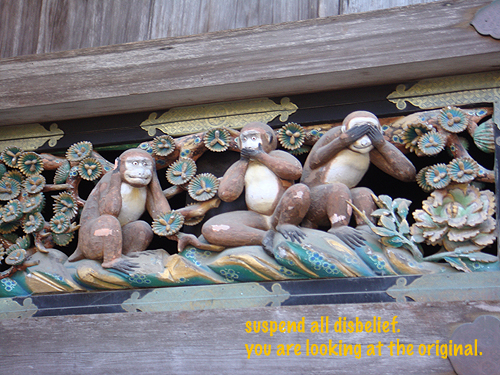
61. When you’re grabbing a quick bite from Yoshinoya or Matsuya (remember gyuudon? – this is the Japanese equivalent of McDonald’s). Look for “oomori”„ÄÄÔºà§ßÁõõ„Çä„ÄÅ„Åä„Åä„ÇÇ„ÇäԺ⠖ this means extra portions on the rice. Guaranteed to make you full even if the meat doesn’t! :)
62. The ramen-ya„ÄÄÔºà„É©„ɺ„É°„É≥±ãÔºâ equivalent is “kaetama.”„ÄÄ(Êõø„ÅàÁéâ„ÄÅ„Åã„Åà„Åü„ÅæÔºâ This is an extra serving of the noodles (sometimes comes with a slice or two of extra meat or vegetables). Finish all the noodles in the bowl (don’t drink too much of the soup!), and ask for “kaetama.” Once the waiter brings it to you, slide the extra serving of noodles into the bowl, and it’s like ordering another ramen!
63. Best part? Look for restaurants that offer free oomori or kaetama portions. :)
64. The Japanese dish “Oyako Don”„ÄÄÔºà˶™Â≠ê‰∏ºÔºå„Åä„ÇÑ„Åì„Å©„ÇìÔºâ (this is one of my favorite foods in Japan – daisuki!) got its name (literally: “parent-child-rice-bowl”) because chicken (the parent) is simmered with egg (the child) and placed over rice.
65. The tradition to eat Fried Pork Cutlet With Rice (katsudon„ÄÅ„Ç´„Éщ∏º) before a major exam or competition stems from the fact that “katsu”„ÄÄ(„Ç´„ÉÑÔºâ is a homophone for “to win”„ÄÄÔºàÂãù„ŧԺâ in Japanese.
66. When Japanese people make Korean kimchi, it looks pretty much the same but the result is often markedly sweeter.
67. The same goes for many Chinese dishes involving the use of soy sauce (braised pork, Chinese egg plants, stews…etc.)
68. Japanese people really like Chinese and Korean food. For example, the frequency of Chinese restaurants in Tokyo far surpasses the frequency of Japanese restaurants in Taipei. (although we like Japanese food too)
69. My favorite food, hands-down, is chirashi (ÊÇâ„Åó„ÄÅ„Å°„Çâ„ÅóÔºâ. Literally, it means “scattered sushi” and is basically sushi but with the fish pieces scattered on top and the sushi rice in a bed at the bottom. I personally feel this is a more efficient way of eating traditional sushi Ôºà„Å´„Åé„Çä„ÄÅnigiri – the kind that you’re used to with a rectangular blob of rice and a piece of fish on top) and ever since I discovered this in Japan a few years ago, it’s been a definite must-eat every time I visit Japan.
70. Did you know that the ginger next to the sushi is called “gari” in Japanese and the green tea that comes with the sushi is called “agari”? (because, or so the joke goes, that someone who was very adverse to eating ginger shows up in a sushi restaurant and mistakenly consumes a few pieces of ginger that came with the sushi. choking upon realizing that he just ate ginger, the customer gasps, “Ah! Gari!”, and the sushi chef quickly delivered a cup of green tea to help him cleanse his palate. thus, the link between “gari” and “agari” was born.) <- I just made that whole thing up.
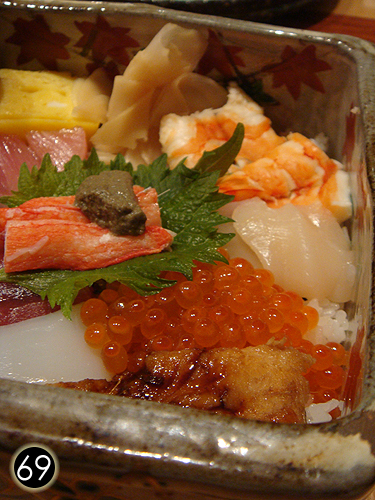
71. At the same time that I applaud Tokyo for its number of public toilets, the other downside is that there seem to be a very sparse number of trash cans (there aren’t even trash cans in the toilet!). Maybe Japanese don’t produce trash? (they seem to be ubiquitous in the States, on the other hand)
72. Want to preserve your memories well? Invest in a Japanese diary/schedule book that goes up to 10 years. Wouldn’t you like to look back in 2018 and wonder what you’re doing in 2009?
73. The diaries mentioned above are frequently sold in Japanese stationary stores and they’re basically like a standard scheduler, although instead of having one day on one page, you have several rows for the same day on each page (to record what you’re doing on that day in different years). The 3-year and 5-year versions are more common, perhaps not surprisingly (I personally don’t think I’m capable of journaling straight for 10 years -_-).
74. The Tokyo Metro Namboku Line (南北線、なんぼくせん) is unmanned!
75. Waseda University ÔºàÊó©Á®≤Áî∞§ßÂ≠¶„ÄÅ„Çè„Åõ„ņ„ņ„ÅÑ„Åå„ÅèÔºâ, a really big university in Tokyo that’s pretty famous for taking a lot of foreign students, also names their buildings with numbers! They also follow the same building/room number scheme (3-204 stands for Building 3, Room 4 on the Second Floor). I was quite surprised when I found out.
76. The Japanese school term begins in April, rather than in the fall for American school systems.
77. The Japanese equivalent of the SATs, or Nyuugaku Shiken (入学試験、にゅうがくしけん) is held this same time during my stay in Japan.
78. With a few exceptions, public universities are more highly regarded than private universities. (the opposite from America).
79. The Japanese university entrance system depends on two steps (for the highly competitive schools like Todai – Tokyo University) – the countrywide “Center Exam” (Point 77) and the individualized institutional exams given later by the universities, depending on the student’s intended major of study in that university (this test is usually later, in February or March). Many competitive schools require a minimum mark on the first exam in order to qualify to take the second exam (which is often much more difficult). Passing both exams on the level established by the school finally ensures admission.
80. To prepare for the individualized institutional exams, publishers have produced “Akahon,”„ÄÄÔºà˵§Êú¨„ÄÅ„ÅÇ„Åã„Ū„ÇìÔºâ or compiled past test questions and answers. The name literally means “red book,” which is an indicator of the color of the book covers. They make an impressive sight when lined up right next to each other in the bookstores.
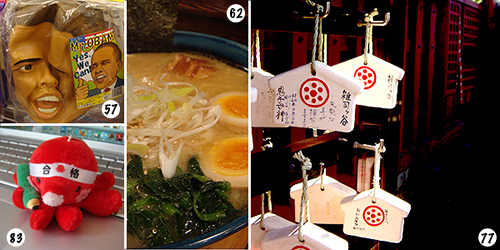
81. There’s also a remarkably curious industry developed for these examination students.
82. Utsunomiya ÔºàÂÆáÈÉΩÂÆÆ„ÄÅ„Å܄ŧ„ÅÆ„Åø„ÇÑÔºâ Zoo, in Tochigi„ÄÄÔºàʆÉÊú®„ÄÅ„Å®„Å°„ÅéÔºâ Prefecture (located about 30 minutes away from Tokyo) marketed a good luck charm made out of….elephant poo. Elephant dung is filled with tough fiber, so zookeepers had discovered a way of producing an unique souvenir charm by isolating the fibers, washing them, pressing them together into a slab, drying them, and then writing traditional phrases for good luck on one side of the slab. Surprisingly (or not), these exam charms made out of elephant poo is in great demand. What I find most curious is how they even conceived the idea in the first place.
83. There is also a pretty popular red octopus stuffed animal that’s produced for examinees. The appeal of the stuffed animal is that its name („Ç™„ÇØ„Éà„Éë„Çπ – Octopus) is a pun on „Åä„Åè„Å® – to put on (like a desk or a flat surface) and „Éë„Çπ – to pass. When taken together, the Japanese for “octopus” can also be read as “if you put me on a desk, then you’ll pass the exam!” It’s not surprising then, that people are buying these small octopi to use as good luck charms for the examinations (although it is generally prohibited to place extraneous objects on desks in order to discourage cheating).
84. Not enough Putiputi? Try Edamame, the never-ending bean-popping sensation.
85. Made a political folly? Suicide is a common way out.
86. Japanese music stores = so much free sample music! They literally put everything up on free listening stations. It’s very possible to spend an hour or so just browsing-through/sampling music.
87. Japanese wholesale chain stores usually have their own jingle, which they play on loop inside the store. The psychological explanation is that the tune gets imprinted in your subconscious, and you’re more likely to come back if you need something else in the future.
88. The guy on the 1000 yen note is a microbiologist, who discovered the cause of syphilis, and gave up his life for the advancement of science when he died studying yellow fever.
89. According to Japanese tradition, the first dream of the New Year can predict the dreamer’s luck. As included in many popular Japanese mangas and anime, if you dream about Mt. Fuji, eggplant, or a hawk, you’ll have good luck for the rest of the year.
90. The follow up to this is less well-known, but also exists: if you dream about a fan (like those folding bamboo fans), tobacco/cigarettes, or a blind man that gives massages, you’ll have good luck too. Where did the blind massage man come from?!
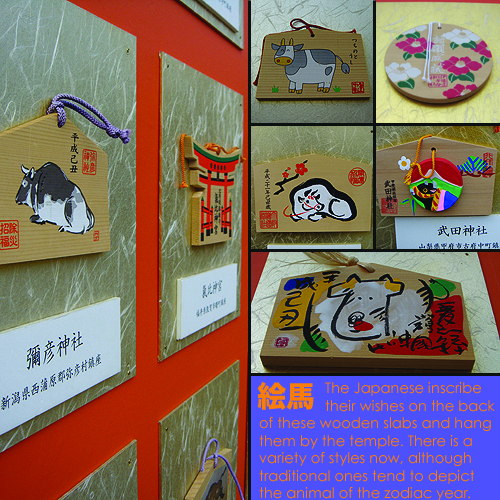
10 Reasons Why I’m Missing Tokyo
91. This is such a freebie that maybe it doesn’t count. But I miss the food. Goodness, the food. On my flight back from Tokyo, the guy who sat next to me ranted on and on to me about not being able to adjust to the food, even after 2 weeks in Tokyo. I almost couldn’t believe it! Good food is in Japan, everywhere. From the 390 yen ramen on roadsides to the 3900 yen unagi-don (eel rice) on the fancy restaurants – good. food. is. everywhere. (but maybe it’s just because I’m Taiwanese. =p)
92. I miss the “metropolitan feeling” of it all. Perhaps I’ve just lived in an urban jungle for too long, but there’s just a sense of convenience and wonderful anonymity about living in a large city.
93. I miss being able to hop on the Subway no matter where I am in Tokyo within 10 minutes of walking.
94. The amazing lunch places with great food and who give you discount because they know you’re a student studying abroad. (and the variety! everyday it’s different – udon, ramen, donburi, yakisoba…mmm!)
95. Stores/restaurants that stay open past 8:30 PM! This is probably my biggest pet peeve of living in Cambridge, Massachusetts.
96. The endless supply of bottled green tea which you can pick up almost anywhere – on the ubiquitous vending machines, small convenience stores (called „Ç≥„É≥„Éì„Éã – konbini – in Japanese. a shortening of the transliteration of “convenience”), Subway station kiosks…etc.
97. I miss being able to be lost in a sea of faces, where no one knows your name.
98. I miss having spontaneous places to go on weekends.
99. I miss having unlimited time to watch anime/Japanese drama. =p I actually finished, for the first time, a complete anime series this IAP. >”< (usually in the past I’ll watch a couple of episodes with my friends and then never really see another episode again).
100. I can’t believe I’m going to say this, but I almost miss the constant stream of people. To be honest, one of my biggest “culture shock” coming back is taking the Boston subway on a Saturday night and noting how little people there are on the subway. lol.
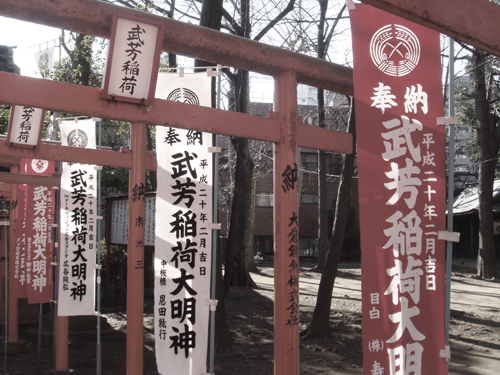
101. True story.
I was taking the Subway on Tokyo, dozing off next to the silver railings, with a group of somnolent businessmen sitting across from me. Suddenly, a gleam of gold jumped out at me from the darkly-attired group. I tried to determine the source of the brightness, whereupon I realized that I was actually looking at a huge, but very distinctive, ring on one of the men’s fingers.
The more I looked at it, the more I felt that I’ve seen the ring somewhere before…
”„ÅÇ„ÅÆ„ÄÅ„Åô„Åø„Åæ„Åõ„Çì„ÄÅÂâç„Å´„ÄÅMIT„ÅÆÂ≠¶Áîü„Åß„Åó„Åü„ÅãÔºü”„ÄÄ(Eh, I’m sorry, but were you a MIT student before?)
“„ÅØ„ÅÑԺńÄÄÔºíÔºêÔºêÔºîÂπ¥„Å´MIT„ÇíÂçíÊ•≠„Åó„Åæ„Åó„Åü„ÄÇ„Å©„ÅÜ„Åó„ŶԺü”„ÄÄ(Yes, I graduated in 2004. Why?)
“Well, you see, I’m right now in the Class of 2011, and I recognized the Brass Rat…”
Unfortunately, around 20 seconds after that, he reached his stop and he had to get off, but before he left he told me that after graduation, he eventually come around to Japan and he’s now working in a computer company here. He shook my hand, wished me good luck with school, and disappeared among the throng of people exiting the train.
In retrospect, due to the big rush then and the excitement of finding a MIT alum in Tokyo (!), I realized that I forgot to ask for his name, but I was able to tell him that I’m “Course 7” (upon which he said, “You really ARE a MIT student. I’m certain now.”) and that I’m just a sophomore studying Japanese during IAP (“You’re missing out on the Mystery Hunt!”).
I’m entirely convinced that “the Brass Rat is one of the most recognizable rings in existence” is true now. :)
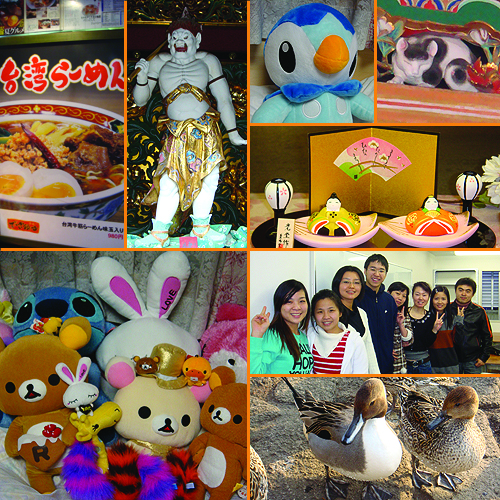
ANDDDD our Ring Premiere (when sophomores get to see what their ring looks like) is this Friday!
Wow. Seeing our Brass Rat. Does this mean that we’ve passed the midway point of our MIT life?
FIRST!!!!!!!!!!!! and, great post!!
lol.. I totally believed #70 til the end
and omg that last story is so amazing ^_^ hope I’ll eventually get to tell my own stories like that
idk how many people know about this forum… but go?
http://www.didigetintomit.com/forum
Omg! wow, amazing. finding a MIT alum right in the subway in a foreign country! Imma go visit Japan one day, thanks to you chris! Those foods sounds awesomely yummy. *imagining that she’s nomnomnom-ing on those japanese foods*
Those foods sounds awesomely yummy. *imagining that she’s nomnomnom-ing on those japanese foods*
And you have a cute signature on the valentine day’s card. Love the stick-out-your-toungue smiley. :p
“56. Isn’t this amazing?!?!”
No, the woman had a towel on.
what are those things that look like orange grapes?
Anon- Vegetarians in Japan probably eat a LOT of rice. Like a lot. lol
Cool, I’ve seen ancient versions of that lamp (not for bathroom use though) in the Hong Kong period drama ÈáëÊûùʨ≤Â≠Ω some years back and Korean period drama ‰∏ÄÊûùÊ¢Ö some weeks agoÔºåbut I never dreamt that it could be used in ‘spa’s.
(For non-TV addicts:
金枝欲孽- Qing dynasty story about a group of scheming royal concubines
一枝梅- Joseon dynasty story about a Korean Robin Hood)
I think the orange thingy might be from some kind of seafood. Crab perhaps?
hey….when you were at Tokyo station, did you hear the noise of the high heels of the woman walking (around 8 o’clock when everyone is going to work)?…I thought it was the funniest sound I have ever heard.
Starbucks in Japan is greaaat!, but sushi..woow..I could it sushi everyday of my life.
I live in Bolivia (a poor country)…and what I found amazing there is how old people understand technology (I mean…watching 60 year old woman sending pictures with their cellphones is not common in my country)
Saludos desde Sudamérica, sigues hablando español?
@ Anon –
There is vegetarian food in Asia too, but it’s relatively more scarce than America, because a smaller percentage of the population is vegetarian. Vegetarians seem to eat a lot of tofu (or soy-derivatives) in Asia.
@ Orange thing –
The “orange grape” thing is actually salmon roe (eggs). They’re quite frequently seen in sushi in Asia although not that common in the States. Perhaps it takes some getting used to, but they’re really good (I grew up in Asia so I’ve forgotten what it would be like to taste it for the first time).
Yes, there is crab in that picture. It’s the longish stick-like thing to the back of the salmon eggs. The green blob on the top of the crab is “kanimiso” (a short Google search revealed that a common English translation is “crab guts”). But basically it’s this slightly gooey substance that’s found inside the shell of the crab that’s not meat. Again, this is probably acquired taste as well…sometimes I forget that a lot of the things you see in Asia you really don’t see much in the States.
First Spain, now Japan. I’m jealous :S
Where next?
Oh totally awesome! I love #101, it’s an amazing story. Almost like fate…
How would you say Tokyo compares to other Asian cities, like Taipei? (lol, for some reason reading this makes me really really really want to go back to Beijing, even though I know Japan =/= China at all, but Asian metropolises seem to have this very unique vibe, you know?)
fish eggs are soo good ^_^
but I have some kind of reaction to it… my skin flamed up once when I ate too much of it.. the doctor thought I had chicken pox, but my mom made them give me the test for it, and it came out to be negative. the doctor was stumped and wanted to “study” me xD
there’s a name for it in chinese “shang huo”, which literally means on fire…. but idk the english for it.
oh yea, I don’t think fish eggs or “crab guts” are acquired tastes… I think it’s just unusual for americans. people who have never been told that guts are disgusting would have no problem with it, so basically, it’s just all psychological.
@deng
Maybe you’re allergic to some seafood. You should take an allergy test to see the specific seafood. Knowing what you are allergic to, can save you your life.
@Oasis’11
Wow, Japan has so many interesting little and weird things. Like the bathtub lamp (I’d like to have one and use it as a bed lamp) or the putupis. Actually I have a story that has to do with putupis: A year a go, a package from Japan was sent to us by an exchange student (from Japan) that stayed at our house for 3 months. Inside the box was an assortment of japanese goodies, one of which was a putupi. We didn’t know what the putupi was, or its purpose or anything, so we just pressed the buttons randomly until kawai japanese sounds would come out of it. Later, through the internet, I found the reason putupis were manufactured, and I literally said: “Wow, these japanese have lots of free time”. And know, after reading you blog, I find that they created a pea putupi XD. But hey! If it wasn’t for Japan we wouldn’t have anime, manga, sushi, Wii,PS3, etc.
~Julio (’14)
@julio ’14
well when the doctor called about the negative results for chicken pox, she didn’t seem to think it was an allergic reaction… she actually thought it was some new disease or something.
anyway, I’ve never had that before that one time or since then, so w/e
I have a question!
If you are admitted to MIT as a 2011 student and later you end up graduating in June 2010, are you still a 2011 or do you turn into a 2010?
And do you end up getting a 2011 brass rat ring or a 2010 brass rat ring? (continued from the previous question)
damn, the food looks mouthwatering!!!
Hey Chris!
Great post!! Tokyo sounds so culturally mixed up and colorful! I totally want to go visit! As they say- Japan has it all: From Wasabi to Plasma TV! (Alright… confession… I made that up just now! Haha!)
Constant stream of people? Well, I’d suggest you go visit Delhi, India (it’s not just a stream at the bus-stops and metro stations; it’s more like a flood/tide/tsunami/anything-that’s-not-as-calm-as-a-stream!
Just to let you know- I LOVE the 101 things- especially the one about the parent-child-rice-dish-thing! I’m sooo going to hunt for it in Singapore (sadly all we have are sushi “fast-food” outlets aka Sakae Sushi)!
Alright… let’s not make it any longer than it already is! Sayonara! (Yes- that’s what my Japanese speaking/typing skills are limited to!)
Random insert: I heard they have dispensing machines/vending machines in Japan selling err… rather peculiar stuff. Is that really true?
XD The one truly surprising thing you told me was that the Japanese liked High School Musical 3. They usually have such good taste ~.~”
I already knew most of these, especially about Obama (see what I said about good taste? The entire foreign world hated Bush almost as much as I did!), but some of the very specific facts are new to me ^.^ Thanks for sharing!! I always love learning more about my future country!
But what’s it like for vegetarians in Japan? I mean, with the abundance of seafood and all.
France!

Wow. You’re going everywhere I want to >_France!
Wow. You’re going everywhere I want to >_<
France!

Wow. You’re going everywhere I want to >_France!
Wow. You’re going everywhere I want to >_<
@ Anna –
The short answer is that Tokyo is a LOT more fast-paced than Taipei (which is, in turn, more fast paced than many US cities). It also seems to be filled with businessmen in suits on weekdays, which isn’t that common of a sight in Taipei. In many ways, I feel like Taiwan still feels a lot more laid-back compared to Japan (perhaps of the tropical weather?). Like what someone said in the comments above, all that you hear in the subway stations is the click of high-heels by businesswomen.
@ Kunaal –
What kind of “interesting stuff”? It’s true that there is some weird stuff before, but the Japanese government is trying to cut down on the sale of those inappropriate things.
@ Valeria –
Sí, este semestre tomo una clase de español y sigo hablar español con amigos quien saben español. Estoy feliz.
@ Tree –
France! (hopefully, hahaha, I’ve got to start learning French!)
@ Anonymous –
I think the whole concept of “class year” is the year which you identify yourself to belong to (which class you feel the most connected to). I don’t think there’s a hard and fast rule about which class you “should” belong to, so I think everything is up to you.
Like I said before, when you elect sophomore standing during second semester freshman year, you get to choose whether you want to be in the constituency of the Class of 2011 or the Class of 2010. Thus, I guess on that piece of paper if you filled out the Class of 2010, then you’re part of the class of 2010? I elected to stay with the Class of 2011, so although my registration technically shows a “Year 3” now (like the Class of 2010 people), I still feel like a sophomore.
Tonight at the Ring Premiere (which I’ll be writing about very soon!), they checked our IDs to see graduation year. Now the curious thing that I’m wondering is that if you elected sophomore standing and chose to be a part of the Class of 2010, you’re technically eligible for the Class of 2010 Brass Rat, but do they change your year of graduation on your MIT Student ID? Or does it still say 2011?
But if you didn’t elect sophomore standing, I guess you’ll probably just stick with the Class of 2011 Brass Rat, even if you graduate in June 2010. See, we get the ring May 2009, so even if you graduate in 2010 instead of 2011, you’ll still have the ring prior to that, so nothing really changes.
Haha, sorry for this philosophical discussion on class years. =p
Awesome post. But, I don’t think I could live in Japan for a long time mainly coz I’m vegetarian- Isn’t life there really monotonous? And are the Japanese people friendly and helpful?
Hey,
I got a score of 108 out of 120 in Toefl(ibt).Is it good enough for getting admitted as a transfer student in MIT?
I like #97. A lot!